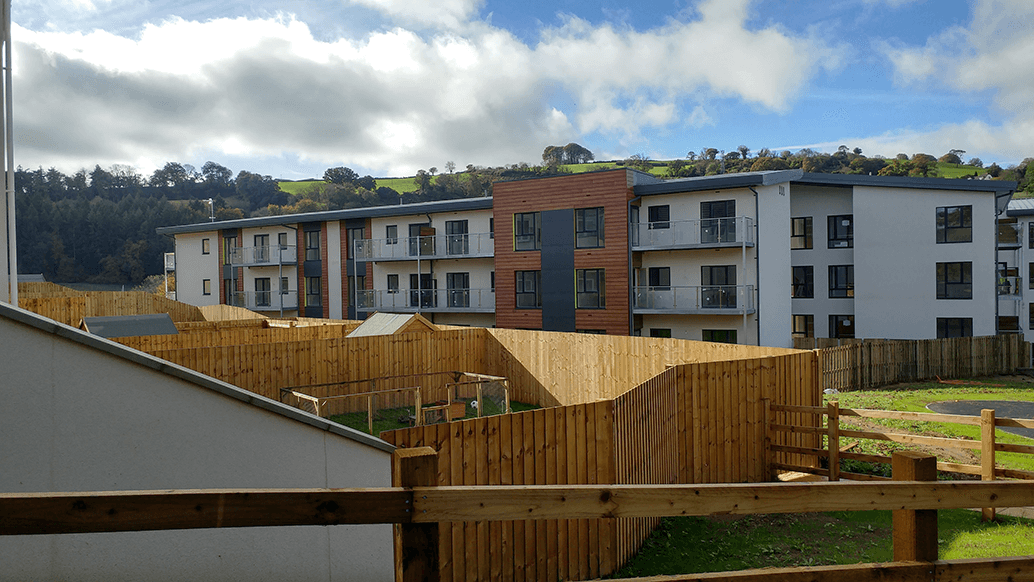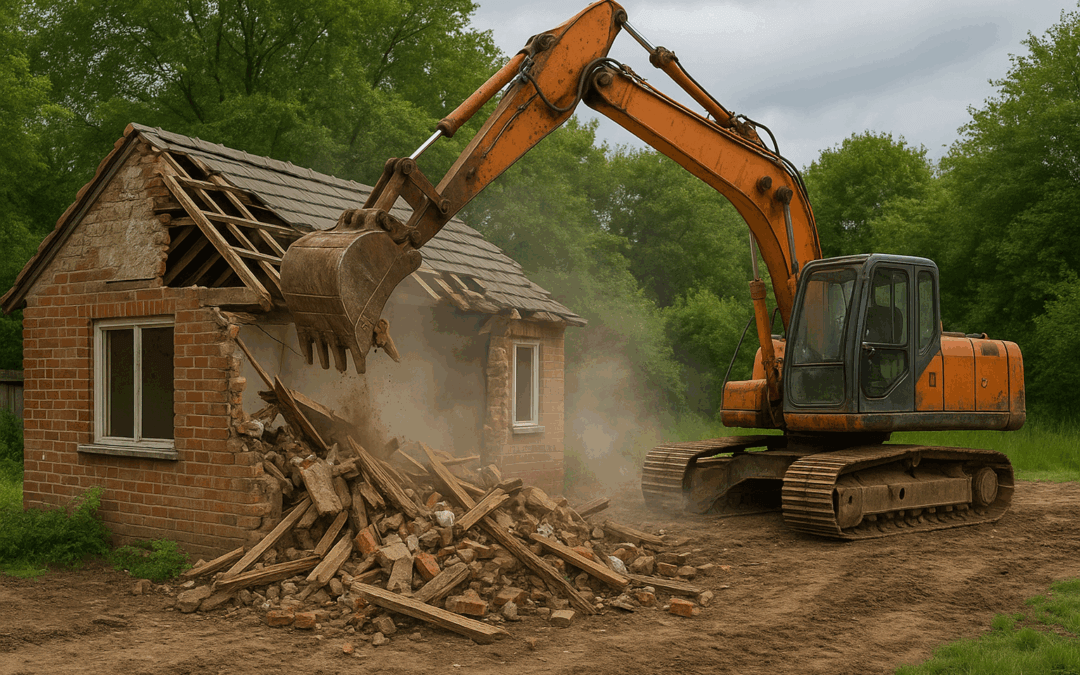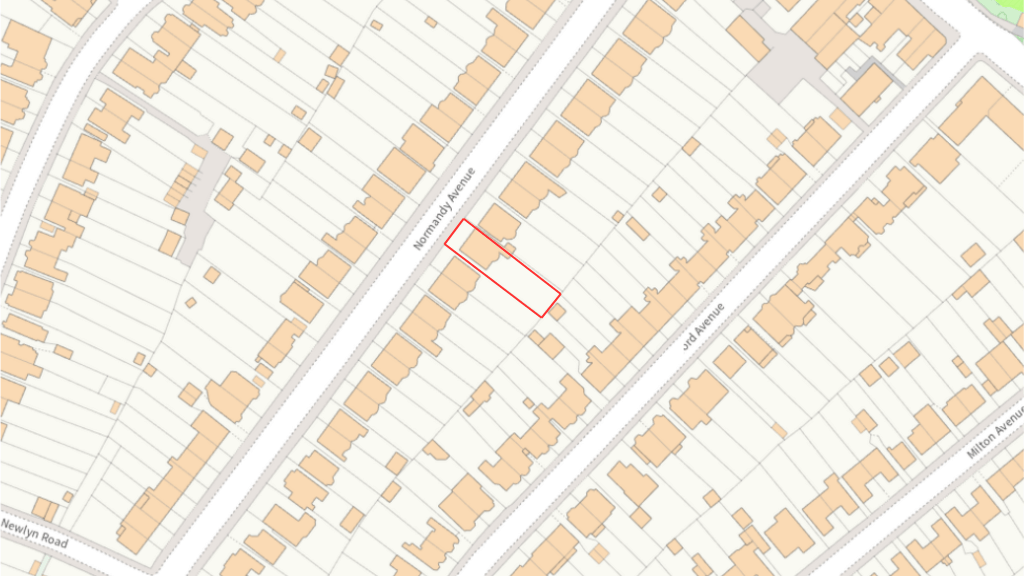by Ian Walmsley | Mar 4, 2023
…of a microgeneration combined heat and power system, on a building other than— (a) a dwellinghouse or a block of flats; or (b) a building situated within the curtilage of a dwellinghouse or a block of flats. Development not permitted O.1 Development is not permitted by Class O if— (a) the capacity of the system that the flue would serve exceeds 45 kilowatts thermal; (b) the height of the flue would exceed either— (i) the highest part of the roof by 1 metre or more, or (ii) the height of an existing flue which is being replaced, whichever is the highest; (c) the installation of the flue would result in the installation on the same building of more than 1……part of the roof by 1 metre or more, or (ii) the height of an existing flue which is being replaced, whichever is the highest; (c) the installation of the flue would result in the installation on the same building of more than 1 flue forming part of either a biomass heating system or a combined heat and power system; (d) the flue would be installed on a listed building, within the curtilage of a listed building, or on a site designated as a scheduled monument; or (e) in the case of a building on article 2(3) land, the flue would be installed on a wall or roof slope which fronts a highway. Page Updated: 4th March 2023…
by Ian Walmsley | Mar 4, 2023
…N – installation etc of flue for biomass heating system on non-domestic premises Permitted development N. The installation, alteration or replacement of a flue, forming part of a microgeneration biomass heating system, on a building other than— (a) a dwellinghouse or a block of flats; or (b) a building situated within the curtilage of a dwellinghouse or a block of flats. Development not permitted N.1 Development is not permitted by Class N if— (a) the capacity of the system that the flue would serve exceeds 45 kilowatts thermal; (b) the height of the flue would exceed either— (i) the highest part of the roof by 1 metre or more, or (ii) the height of an existing flue which is being……part of the roof by 1 metre or more, or (ii) the height of an existing flue which is being replaced, whichever is the highest; (c) the installation of the flue would result in the installation on the same building of more than 1 flue forming part of either a biomass heating system or a combined heat and power system; (d) the flue would be installed on a listed building, within the curtilage of a listed building or on a site designated as a scheduled monument; or (e) in the case of a building on article 2(3) land, the flue would be installed on a wall or roof slope which fronts a highway. Page Updated: 7th March 2023…
by Ian Walmsley | Mar 4, 2023
…heat pump within the curtilage of a building other than a dwellinghouse or a block of flats. Conditions L.1 Development is permitted by Class L subject to the following conditions— (a) the total area of excavation must not exceed 0.5 hectares; (b) the development must not result in the presence within the curtilage of more than 1 ground source heat pump; and (c) a pump is removed as soon as reasonably practicable when no longer needed and the land is, as far as reasonably practicable, restored to its condition before the development took place, or to such condition as may have been agreed in writing between the local planning authority and the developer. Page Updated: 4th March 2023…Class L – Ground source heat pumps on commercial Ground source heat pumps are permitted development and do not require planning permission. This is subject to just two minor limitations. Any excavation of the ground is limited to 0.5 hectares and you only install one ground source heat pump. And that it that on Class L! For a residential version of this, please see Class C of Part 14. Legislation Class L – installation or alteration etc of ground source heat pump on non-domestic premises Permitted development L. The installation, alteration or replacement of a microgeneration ground source heat pump within the curtilage of a building other than a dwellinghouse or a block of flats. Conditions…
by Ian Walmsley | Mar 3, 2023
Class D – Water source heat pumps on residential Water source heat pumps are permitted development and do not require planning permission. Unlike other permitted development rights there are no restrictions in conservation areas or listed buildings unless an Article 4 exists or a restriction via a previous planning permission. They can also be installed within the curtilage of a block of flats. If it is a listed building you will probably still require listed building consent for your water source heat pump. As you can see from the very limited legislation there are no conditions within Class D for water source heat pumps. And that it that on Class D! For the commercial version of this, please see…
by Ian Walmsley | Mar 3, 2023
…the curtilage of a block of flats. If it is a listed building you will probably still require listed building consent for your ground source heat pump. As you can see from the very limited legislation there are no conditions within Class C for ground source heat pumps. And that it that on Class C! For the commercial version of this, please see Class L of Part 14 Legislation Class C – installation or alteration etc of ground source heat pumps on domestic premises Permitted development C. The installation, alteration or replacement of a microgeneration ground source heat pump within the curtilage of a dwellinghouse or a block of flats. Page Updated: 4th March 2023…Class C – Ground source heat pumps on residential Ground source heat pumps are permitted development and do not require planning permission. Unlike other permitted development rights there are no restrictions in conservation areas or listed buildings unless an Article 4 exists or a restriction via a previous planning permission. They can also be installed within the curtilage of a block of flats. If it is a listed building you will probably still require listed building consent for your ground source heat pump. As you can see from the very limited legislation there are no conditions within Class C for ground source heat pumps. And that it that on Class C! For the commercial version of this, please see…
by Ian Walmsley | Mar 1, 2022
…the most up to date list can be found on the Government website here. Class C cannot be used if the land is within the curtilage of a dwellinghouse. Legislation Class C – use of land by members of certain recreational organisations Permitted development C. The use of land by members of a recreational organisation for the purposes of recreation or instruction, and the erection or placing of tents on the land for the purposes of the use. Development not permitted C.1 Development is not permitted by Class C if the land is a building or is within the curtilage of a dwellinghouse. Interpretation of Class C C.2 For the purposes of Class C, “recreational organisation” means an organisation…
by Ian Walmsley | Mar 1, 2022
…the Caravan SItes and Control Development Act 1960 it says “caravan” means any structure designed or adapted for human habitation which is capable of being moved from one place to another (whether by being towed, or by being transported on a motor vehicle or trailer) and any motor vehicle so designed or adapted. Therefore a caravan could be – static caravans, touring caravans, motorhomes/campervans, pods, shepherd’s huts, gypsy caravans and moveable lodges, micro lodge or even a container etc. as long as it can be moved, then that is fine. First Schedule Cases where a Caravan Site Licence is not required Use within curtilage of a dwellinghouse 1 A site licence shall not be required for the use of……land as a caravan site if the use is incidental to the enjoyment as such of a dwellinghouse within the curtilage of which the land is situated. Use by a person travelling with a caravan for one or two nights 2 Subject to the provisions of paragraph 13 of this Schedule, a site licence shall not be required for the use of land as a caravan site by a person travelling with a caravan who brings the caravan on to the land for a period which includes not more than two nights— (a) if during that period no other caravan is stationed for the purposes of human habitation on that land or any adjoining land in the same occupation, and…

by Ian Walmsley | Feb 28, 2022
…Development is not permitted by Class E if— (a) the land in question, or the land on which the building in question is situated, is more than 3 hectares; (b) the use of the land is for overnight accommodation; (c) the height of any temporary structure, works, plant or machinery provided under Class E(b) exceeds 20 metres, or 5 metres where any part of the structure, works, plant or machinery is within 10 metres of the curtilage of the land; (d) the land or building is on article 2(3) land; (e) the land or the site on which the building is located is or forms part of— (i) a site of special scientific interest; (ii) a safety hazard area; or……(iii) a military explosives storage area; (f) the land or building is, or contains, a scheduled monument; or (g) the land or building is a listed building or is within the curtilage of a listed building. Conditions E.2—(1) Class E development is permitted subject to the condition that— (a) any structure, works, plant or machinery provided under the permission must, as soon as practicable after the end of each filming period, be removed from the land; and (b) the land on which any development permitted by Class E has been carried out must, as soon as reasonably practicable after the end of the filming period, be reinstated to its condition before that development was carried out. (2) Class E development…
by Ian Walmsley | Feb 28, 2022
…commercial, business and service etc to temporary flexible use Permitted development D. Development consisting of a change of use of a building and any land within its curtilage— (a) from a use falling within one of the following provisions of the Use Classes Order— (i) article 3(6)(n) (betting office); (ii) article 3(6)(o) (pay day loan shop); (iii) article 3(6)(r) (hot food takeaway); or (iv) Class E (commercial, business and service) of Schedule 2, (b) to a flexible use falling within one of the following provisions of Schedule 2 to that Order— (i) Class E (commercial, business and service); (ii) Class F.1(b) (display of art); (iii) Class F.1(c) (museum); (iv) Class F.1(d) (public library or public reading room); or (v) Class……F.1(e) (public hall or exhibition hall), for a single continuous period of up to 3 years beginning on the date the building and any land within its curtilage begins to be used for the flexible use or on the date given in the notice under paragraph D.2(a), whichever is the earlier. Development not permitted D.1 Development is not permitted by Class D if— (a) the change of use relates to more than 150 square metres of floor space in the building; (b) the site has at any time in the past relied upon the permission granted by Class D; (c) the site is, or forms part of, a military explosives storage area; (d) the site is, or forms part of,…
by Ian Walmsley | Aug 15, 2020
…Agricultural Holdings Act 1986; or (b) the Agricultural Tenancies Act 1995; “curtilage” means, for the purposes of Class R or S only— (a) the piece of land, whether enclosed or unenclosed, immediately beside or around the agricultural building, closely associated with and serving the purposes of the agricultural building, or (b) an area of land immediately beside or around the agricultural building no larger than the land area occupied by the agricultural building, whichever is the lesser; “established agricultural unit” means agricultural land occupied as a unit for the purposes of agriculture— (a) for the purposes of Class R, on or before 3rd July 2012 or for 10 years before the date the development begins; or (b) for the purposes……being notified whether prior approval is required, given or refused; “registered nursery” means non-domestic premises in respect of which a person is registered under Part 3 of the Childcare Act 2006 to provide early years provision; “site” means the building and any land within its curtilage; “state-funded school” means a school funded wholly or mainly from public funds, including— (a) an Academy school, an alternative provision Academy or a 16 to 19 Academy established under the Academies Act 2010; (b) a school maintained by a local authority, as defined in section 142(1) of the School Standards and Framework Act 1998; and “sui generis use” means a use for which no class is specified in Schedule 1 or 2 to the…

by Ian Walmsley | Aug 4, 2020
…Therefore a highway could include cycle paths and bridleways. At appeal many inspectors have taken the view that a “highway” may be a private road so long as it is one over which the public has a right to pass and repass. The height of the fence is measured from the natural ground level which may be higher or indeed lower than surrounding land. This could result in one neighbour seeing a fence that is higher as it might be built on a retaining wall for example. Where might you need planning for a new fence or wall? You do not enjoy this permitted development right to erect a fence or wall if the property and curtilage is……the height appropriate to it if erected or constructed, whichever is the greater; or (d) it would involve development within the curtilage of, or to a gate, fence, wall or other means of enclosure surrounding, a listed building. Interpretation of Class A A.2 For the purposes of Class A, “school” includes— (a) premises which have changed use under Class S or T of Part 3 of this Schedule (changes of use) to become a state-funded school or registered nursery as defined in paragraph X of Part 3; and (b) a building permitted by Class C of Part 4 of this Schedule (temporary buildings and uses) to be used temporarily as a school, from the date the local planning authority is…
by Ian Walmsley | Jun 24, 2018
…then sadly that is also out. Check out our glossary if you are not sure on any of these acronyms. Once you have been given the go ahead to convert any casinos where you didn’t clean up at blackjack, you will have three years to convert following the local authorities decision. Check out other permitted development options on our changes of use page. Legislation Class N – specified sui generis uses to dwellinghouses Permitted development N. Development consisting of— (a) a change of use of a building and any land within its curtilage from a use as— (i) an amusement arcade or centre, or (ii) a casino, to a use falling within Class C3 (dwellinghouses) of the Schedule to the……41(3) of the Wildlife and Countryside Act 1981; (iii) the Broads; (iv) a National Park; or (v) a World Heritage Site; (f) the site is, or forms part of— (i) a site of special scientific interest; (ii) a safety hazard area; (iii) a military explosives storage area; (g) the building is a listed building or is within the curtilage of a listed building; or (h) the site is, or contains, a scheduled monument. Conditions N.2—(1) Where the development proposed is development under Class N(a) together with development under Class N(b), development is permitted subject to the condition that before beginning the development, the developer must apply to the local planning authority for a determination as to whether the prior approval…

by Ian Walmsley | Jun 20, 2021

by Ian Walmsley | Jun 22, 2018
…paying directly is cheaper, but might take longer to process. Legislation Class O – offices to dwellinghouses Permitted development O. Development consisting of a change of use of a building and any land within its curtilage from a use falling within Class B1(a) (offices) of the Schedule to the Use Classes Order, to a use falling within Class C3 (dwellinghouses) of that Schedule. Development not permitted O.1 Development is not permitted by Class O if— (b) the building was not used for a use falling within Class B1(a) (offices) of the Schedule to the Use Classes Order— (i) on 29th May 2013, or (ii) in the case of a building which was in use before that date……but was not in use on that date, when it was last in use; (d) the site is, or forms part of, a safety hazard area; (e) the site is, or forms part of, a military explosives storage area; (f) the building is a listed building or is within the curtilage of a listed building; or (g) the site is, or contains, a scheduled monument. Conditions O.2.—(1) Development under Class O is permitted subject to the condition that before beginning the development, the developer must apply to the local planning authority for a determination as to whether the prior approval of the authority will be required as to— (a) transport and highways impacts of the development, (b) contamination risks on…

by Ian Walmsley | May 19, 2025
…used, or was last used, for the purpose of— (i) a concert hall; (ii) a venue for live music performance; or (iii) a theatre; or (e) the demolition relates to a statue, memorial or monument (“a commemorative structure”) in place for a period of at least 10 years on the date of any proposed demolition, other than a commemorative structure— (i) that is a listed building; (ii) that is a scheduled monument; (iii) within a cemetery, on consecrated land, or within the curtilage of a place of public worship; (iv) within the grounds of a museum or art gallery; or (v) within the curtilage of a dwellinghouse. Conditions B.2 Development is permitted by Class B subject to the following conditions—…

by Ian Walmsley | Feb 9, 2018
…2(3) to 2(4) Land Part 1 – Article 2(3) land Part 2 – Article 2(4) land Schedule 2: Part 1 – Development within a curtilage of a house Part 1 – development within a curtilage of a dwellinghouse PD rights in a conservation area | in an AONB area | in a National Park | on a listed building Class A – Enlargement, improvement or other alteration of a dwellinghouse e.g. Extensions, new doors & windows etc Larger Home Extension | Rear Extension | Side Extension Class AA – Enlargement of a dwellinghouse by construction of additional storeys Class B – Additions etc to the roof of a dwellinghouse e.g. Dormers Class C – Any other alterations to a roof…

by Ian Walmsley | Apr 11, 2025
…of this is defined in the Town & Country Planning (Development Management Procedure) (England) Order 2015 or DMPO for short! As a general rule, any fee proposals given by Planning Geek, will not include drawings. Location Plan A Location Plan helps identify precisely where your proposed development site is located within the local area. This is a requirement for all planning applications. This plan must: Clearly identify the application site boundary with a solid red line. The redline must encompass the curtilage of the property including garaging, driveway, parking as applicable, and access thereto from the public highway Include any other land you own adjoining or close to the site, outlined in blue Be based on an up-to-date…

by Ian Walmsley | Mar 28, 2025

by Ian Walmsley | Jan 14, 2025
…£1,043 – an increase of 105% The fee of £258 for householder developments related to small-scale operations within the curtilage of a dwellinghouse is not changing – this would be for items such as garages, outbuildings, porches, gates, fences and walls It is always advisable to see if you can just go ahead under permitted development. Contact Planning Geek if you need guidance on this. Click here to contact us. Prior Approvals Most changes of use under Part 3 of the GPDO will require a prior approval application. The flat fee for prior approval applications that don’t involve building operations is increasing from £120 to £240 – an increase of 100% (was £96 before December 2023) The flat fee…

by Ian Walmsley | Nov 13, 2024
…use for manufacturing or other industrial processes of a sort that can (in each case) reasonably be carried on in proximity to, and compatibly with, the preceding uses. The above must be situated on a designated high street or in a designated town centre and the local authority must consider them suitable for a high street use. Legislation Class DB: Use of qualifying high-street premises changing to a suitable high-street use Permitted development DB. Development consisting of a change of use of a building which is a qualifying high-street premises within the meaning of section 192(2) of the Levelling-up and Regeneration Act 2023 (“the 2023 Act”) and any land within the curtilage of that building to a suitable high-street…













